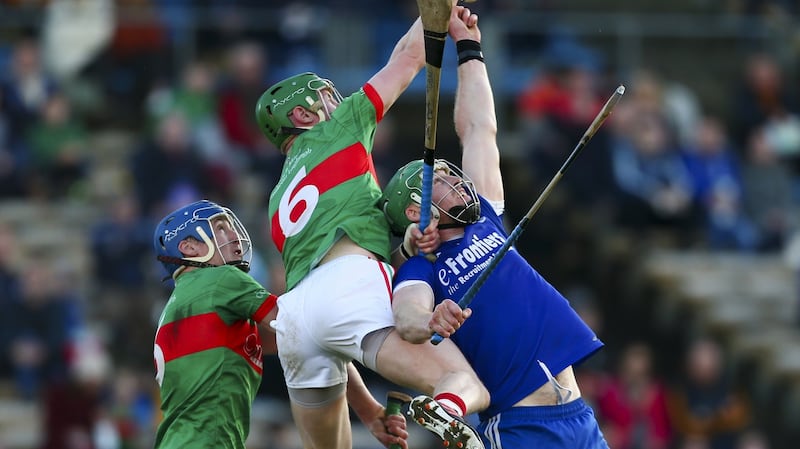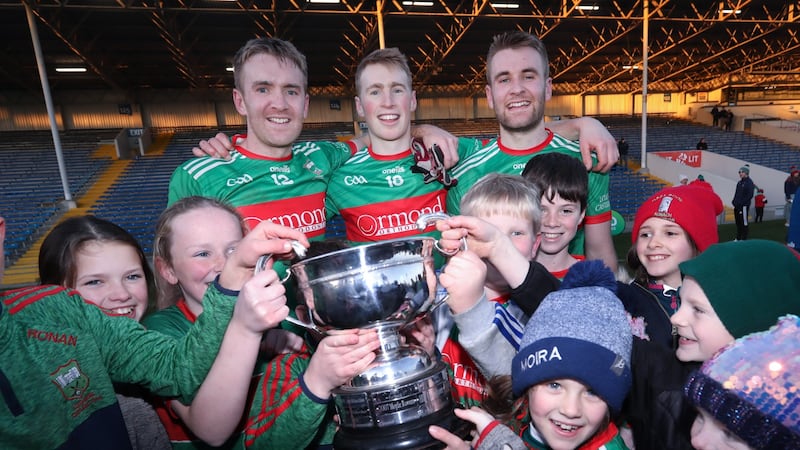A few years ago, Thurles Sarsfields defeated Loughmore-Castleiney in a senior hurling championship match. I came home, ate the steak dinner that was put in front of me, and didn't talk to my wife for two full days.
It was a perfectly normal – sorry, idiotic and childish – reaction to the defeat.
In my defence, my wife is a Thurles woman, the children play for Sars, and we live in the heart of enemy territory, so the neighbours are either supporters of my lifelong local rivals or, worse, actually play for their team.
The more I think about it, the more reasonable my reaction seems.
Either way, you can be sure it was mentioned to me more than once in the run-up to this season’s Tipperary senior hurling final – which ended in a draw two weeks ago, and will be decided once and for all on Sunday afternoon when the neighbouring parishes meet again in Semple Stadium.
Both clubs are used to dining at the top table in Tipperary GAA.
When you look at the clubs, though, there are good reasons why one should not be there.

In playing numbers, Loughmore-Castleiney are not a big club
Still, conscription would hardly gather up as many soldiers as take to the field in the green and red, Mayo-style jerseys. Despite a total parish population of only 1,000, the club fielded three adult hurling and football teams in this year’s junior, intermediate and senior championships. The third team in hurling, which won the mid-Tipp Junior C grade last month, had 35 players on the panel (with an age range of nearly 40 years).
A cynic might say there’s obviously not much else to do in the locality, but that’s not true – there’s a Progressive 25 card game on Sunday nights in the parish centre.
In revenue terms, Loughmore-Castleiney are not a big club
It’s a perennial challenge for all clubs – though perhaps particularly so for small, rural ones with super-sized ambitions. Loughmore-Castleiney is a two-pub, one-sports-field parish, and funds are usually scraped together from church gate collections, the odd business owner who has any, however tenuous, connection with the club, and membership dues and donations from supporters. And, of course, there’s the godsend for sports clubs everywhere: the weekly club lotto – manna from heaven for club officials looking for a steady income source (and, unlike the National Lottery, club jackpots are actually won every now and then). And, at the moment, the club has a training fund open, relying on the goodwill of people (mainly locals of course) to keep the show on the road. (Bank Account is IE80 BOFI 9044 5629 1729 81 if you want to support the cause).
In regards to facilities, Loughmore-Castleiney are not a big club
Would you be surprised to learn that the senior team spends much of its time training on another parish’s pitch? Few clubs envy Loughmore-Castleiney for its facilities. There’s a pitch, there are nets, there are dressingrooms. The basics. A hurling wall was completed earlier this year. But for a small, rural club, whose season spans one end of the year to the other, even the most creative club committee members struggle to raise the big sums needed to maintain current facilities – never mind contemplate expansion. Still, the club has moved heaven and – more usually – earth in order to keep the club grounds in working order, and things have improved over the decades. When floodlights were first installed, there was a large area in the middle not covered at all – so in poor weather conditions a player running from his own half could disappear into the night, only to reappear near the opposition’s 21-yard line. It was, literally, the dark ages – though not without its advantages for the inventful (once a player managed to hide the sliotar in his shorts while passing through no-man’s land).
Perhaps, though, the most cited reason why this small club should not be regularly contesting for the highest honours in Tipp hurling is that it is, traditionally, a football club. And still is a football club.
Since the 1970s, though, that’s only half true.
This is the parish of Jim and Bill Ryan, who played for Tipp on Bloody Sunday in November 1920 – something everyone who has ever worn the club jersey has been told about. Traditionally in Tipp, football was king in the south of the county, as well as one small enclave between Templemore and Thurles. The story goes that, decades ago, hurleys were thrown from the club pitch into a neighbouring field when it was suggested both codes could be entertained together. However, in truth, and for many years now, everyone has been pulling in the same direction.
The club is not unique, of course, in giving hurling and football equal billing. What is unusual, though, is that it consistently competes for high honours in both – last season rather cruelly losing the two senior championship finals due to injury-time scores.
No one would have blamed the players for taking time to lick their wounds.
A year later, the club were back in both senior county finals again – last weekend claiming the football crown by defeating hot favourites Clonmel Commercials. After the match, we stood on the Semple Stadium pitch and drank it all in, the agony of the previous season erased. Still, there would be no big celebration back in the parish that evening – less because of the pandemic and more because, for a dual club in two finals, it was only half-time.

There’s a lot of talk recently about dual clubs, and there are fine examples across the island. Few clubs, though, have one panel of players playing two codes. Of the 18 Loughmore-Castleiney players who saw game time in the drawn county hurling final a fortnight ago, 14 played the following week in the county football decider. Of the other four, one was injured (former Tipperary footballer and current Tipp hurler John Meagher) and the other three were unused subs. So, for most of the players, this weekend’s replayed hurling final will be their 17th senior championship match in 17 weeks. And, win or lose, the Munster club football championship begins for the club next weekend in Ennis.
Just for perspective, no one played for Kilmacud Crokes in both their recent Dublin senior hurling and football finals. And only one player, Brian Sheehy, was a member of the two panels.
It’s why when a Loughmore-Castleiney player gets into the car to go to a championship game, he has to stop and double-check himself before he drives off – gloves and gumshields, or hurley and helmet?
So, why is Loughmore-Castleiney a big club?
What makes a little side a big player? Community spirit? Sense of identity? Heart? Determination? Fearlessness? The dedication of the officials in the background? How I would love to suggest these things are special to my little GAA club, but of course they’re not.
In truth, it’s far simpler than that: a once-in-a-lifetime group of talented players, with the required blend of stars and talented clubmen who can stand toe-to-toe with the best. (And it’s not just the boys. Last week, the Drom & Inch senior camogie team – made up of many players from Loughmore-Castleiney – retained the county senior championship.)
Particularly during these past two wretched years globally, these teams have given locals so much more joy and distraction and elation and pride.
At its roots, what else is the GAA for?












